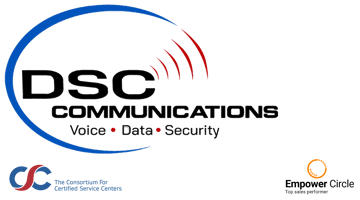(Manitowoc, WI – October 1, 2025) – DSC Communications is proud to announce the acquisition of...
Limiting Access to Restricted Areas
Limiting Access to Restricted Areas in Manufacturing: Why It Matters and How to Do It Right
In today’s fast-paced manufacturing environments, security is no longer optional, it's essential. Unauthorized access to sensitive or restricted areas can lead to safety hazards, intellectual property theft, data breaches, or costly downtime. Whether it's a high-tech production floor or a controlled storage zone, manufacturers must be proactive in controlling who gets in and who doesn’t.
At DSC Communications, we work with organizations to design and implement tailored access control solutions that protect people, property, and productivity. Here’s how you can start tightening access to your facility’s most critical areas.
Why Limiting Access Matters in Manufacturing
-
Protecting Intellectual Property (IP):
In industries where proprietary processes, designs, or formulas are developed, access control helps keep competitive advantages safe. -
Safety Compliance:
Certain areas, like those involving heavy machinery, chemicals, or clean rooms, require trained personnel. Limiting access helps ensure OSHA and industry-specific compliance. -
Preventing Internal Theft or Sabotage:
Not all threats come from outside. Proper access control limits the opportunity for internal security breaches. -
Traceability & Accountability:
Access logs allow facilities to track who entered a zone and when. This is critical for audits, investigations, and operational review.
Common Restricted Areas in Manufacturing Facilities
-
Server/Data Rooms
-
Clean Rooms
-
Chemical Storage Areas
-
High-Voltage Equipment Rooms
-
Executive Offices
-
Network/IT Infrastructure Hubs
5 Best Practices for Limiting Access to Restricted Areas
1. Implement Access Control Systems
Leverage keycard readers, biometric scanners, or mobile credentials to ensure only authorized personnel can enter restricted zones. These systems should be integrated with your broader building security and IT infrastructure.
2. Use Multi-Factor Authentication
In high-security areas, one credential isn’t enough. Combine badge access with biometric verification (like a fingerprint) or a PIN code for an added layer of protection.
3. Establish Role-Based Access
Give employees access only to the areas they need for their role. Use directory services or identity management platforms to automate permissions based on job titles, shifts, or departments.
4. Monitor and Audit Access Logs
Regularly review entry logs and system alerts. Unusual activity, like access attempts at odd hours should be investigated promptly.
5. Train Employees and Enforce Policies
Even the best tech can be undermined by human error. Train staff to understand the importance of restricted zones and report suspicious activity or tailgating incidents.
Bonus: Integrating Access Control with Surveillance
Combining access control systems with high-resolution video surveillance allows for real-time verification of access events. If someone uses a credential, your system can instantly match it with a video timestamp, improving your ability to monitor and respond to incidents.
How DSC Communications Can Help
With decades of experience in communications infrastructure and security, DSC Communications provides:
-
Custom-designed access control solutions
-
Integration with existing building management and security systems
-
Scalable systems for multi-site manufacturing
-
Ongoing support and compliance consulting
Need help securing your manufacturing facility?
Let DSC Communications provide a tailored access control solution that scales with your operations and keeps your team and your assets safe.
👉 Contact us today to schedule a free security consultation.





